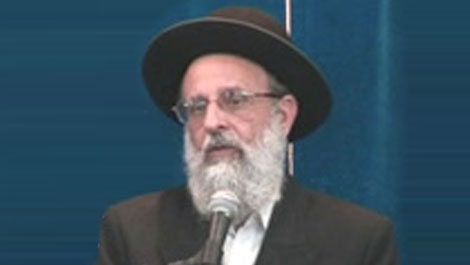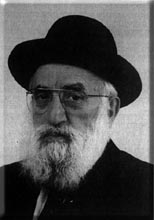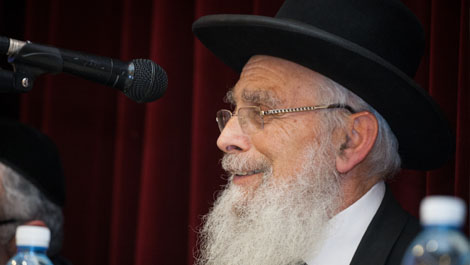Beit Midrash
- Sections
- Chemdat Yamim
- Bemare Habazak - Rabbis Questions
- Jewish Laws and Thoughts
- Prayer
- Additional Halacha Lessons
Answer: The gemara (Menachot 32b) says that a mezuza that is written like an iggeret (letter) is pasul, and Rashi includes in the possible problems, extra letters. The Shulchan Aruch (Yoreh Deah 288:15, based on the Rosh, Mezuza 18), says that adding anything, even non-letter markings, to a mezuza is forbidden because it makes it look like an amulet for good luck. In the laws of sefer Torah (ibid. 274:7), he pasuls a sefer Torah that includes vowels, even if they are later removed, or signs to show where a pasuk ends. Rishonim explain simply that we are supposed to leave the sefer Torah the way it was given at Sinai.

Bemare Habazak - Rabbis Questions (627)
Rabbi Daniel Mann
345 - Alerting People to Stand
346 - Temporary Markings in a Sefer Torah
347 - The Logic Behind the Unusual Fast of the Firstborn
Load More
The Rambam (Mezuza 5:3) says that the writing of one of Hashem’s names, according to an old minhag, on the mezuza is okay because it is on the back. Our case would seem to be better, as the notation is not on the scroll at all; it is only on something that is sitting on top of the sefer Torah, albeit with a little adhesion so it can stay for a while or until one easily removes it.
We were asked (see Bemareh Habazak III:13) about developing a see-through sheet with punctuation and trop to put on top of a sefer Torah to simplify its reading. We rejected it not only because of the major change in minhag, but also because it effectively changes reading from the Torah from the way it was intended – purposely without punctuation and trop. These are supposed to be learned from another source (and, one might add, at another time). However, our case is different in that one is not reading the Torah with the help of a marking. Rather, it gets us to the right place; we lain normally several seconds later (after the berachot).
There is another issue. The sefer Torah scroll is holy and must not be used for chol purposes (see Magen Avraham 42:6). Therefore, poskim (Minchat Yitzchak II:15; Tzitz Eliezer ibid.) forbid writing even on the bottom or the back of a scroll, even when it is does not disqualify it. Likewise one should not stick notes to a sefer Torah.
On the other hand, context is critical. Sofrim and those sending corrections do mark (in pencil or with post-its) scrolls because it is to promote the sefer’s kashrut. While we may not put less holy things on top of a sefer Torah (Shulchan Aruch, YD 282:19), we do cover it when leaving it unused because this is for the sefer Torah’s honor.
Is what you are inquiring about for the sefer Torah’s "well-being"? If someone can find the place to put a post-it, he can likewise just make sure that the Torah will be opened to the right column. Ba’alei kri’ah have access to a tikun l’korim, to which almost all sifrei Torah these days are lined up. The ba’al korei knows the p’sukim of the laining. So how much of a need is there for a marker? Thus, putting the marker there not only does not seem necessary for the laining and/or honoring the sefer Torah, but gives the impression that no one took the time to familiarize himself with the sefer Torah (see a similar idea in Berachot 20b). Therefore, the presence of the note seems to be an improper appendage to the sefer Torah and forbidden (see Tzitz Eliezer ibid. who objects on these grounds regarding a more important need).
If your case includes circumstances we have not anticipated, get back to us. If such a system were necessary enough to justify, we would have to discuss if, on Shabbat, it would be better to remove the note before reading or leave it there (see Shemirat Shabbat K’hilchata, 5770 ed. 28:8; Minchat Asher II:39).

Ask the Rabbi: Watching a Bar Mitzva Videoed on Shabbat
Rabbi Daniel Mann | Adar 5785

Ask the Rabbi: Timing of Ma’aser Kesafim
Rabbi Daniel Mann | Sivan 5785

Ask the Rabbi: Yissachar and Zevulun for Mitzvot
Rabbi Daniel Mann | Tammuz 5785

Ask the Rabbi: Using Replacement Mezuzot When They Are Being Checked?
Rabbi Daniel Mann | Av 5785

Rabbi Daniel Mann

Encouraging a Child to Criticize His Parent
5774

Bikur Cholim by Electronic Means
Shvat 1 5782

Calling a Kohen Who is a Katan
Av 22 5777
























